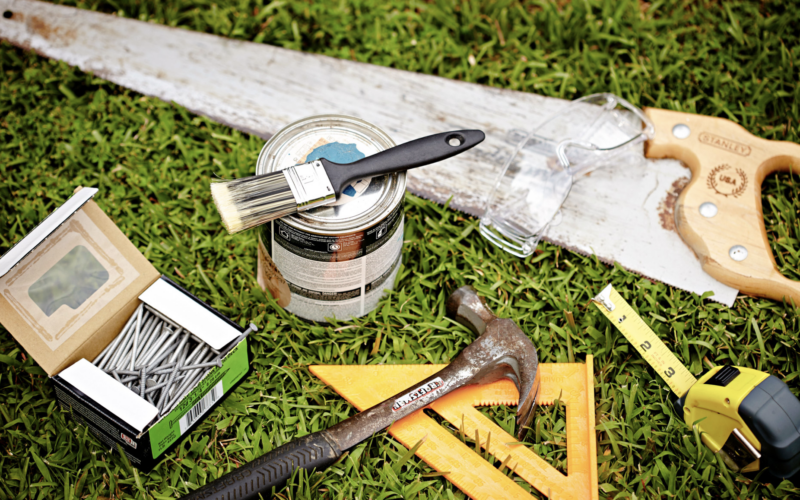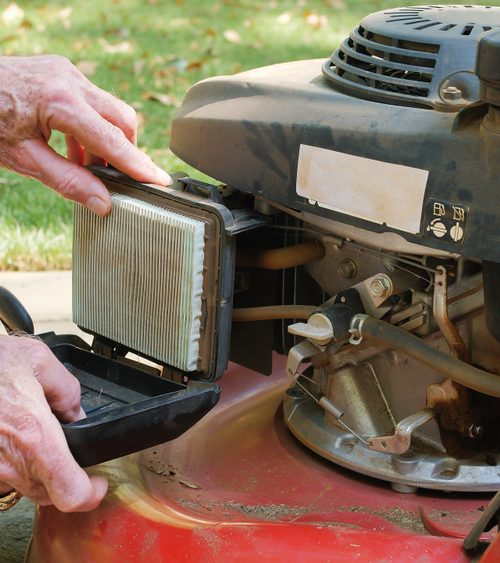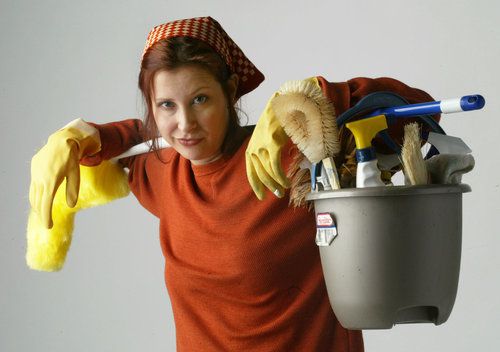By Jessica Bennett | BHG.Com
Troy Warren for CNT #HomeGarden
Nearly 80% of homeowners make some sort of blunder while attempting a DIY project, according to a recent survey. Here’s how to make sure yours goes smoothly.
Do-it-yourself projects let you customize your space, provide a savvy way to save money on home upgrades, and elicit a swell of pride when the final product turns out just the way you envisioned. But even with the most meticulous step-by-step instructions, DIYs don’t always go to plan.
According to a recent survey conducted by the home services website Angi, nearly 80% of homeowners make a mistake while attempting to tackle a project themselves, which can result in expensive property damage, serious injury, or even a home disaster. DIY projects are best done right the first time, and there are a few key steps you can take to avoid a costly and potentially dangerous error. Here are some of the biggest DIY mistakes homeowners make and how to avoid them.
1. Taking on Too Much
More than 40% of individuals find DIY projects more challenging and expensive than they expected, according to the survey, which involved 1,000 American homeowners who had tackled at least one DIY home improvementor renovation project since the start of the COVID-19 pandemic. By taking on a task that requires more time or skill than you can handle, you risk ending up with a big mess and an unfinished project. Plus, the costs of materials, power tools, safety gear, and other essentials can quickly add up, and mistakes can be costly to fix.
“It’s important to think about why you want to DIY and what you’re hoping to get out of it before committing to a big project,” said Bailey Carson, a home care expert and head of the Book Now service at Angi, in a press release. “If you’re doing it just to save money, you might want to reconsider. Without the time, tools, and talent to do it properly and safely, mistakes may cost you more in the long run than simply having a pro come in to help from the beginning.”
How to avoid this mistake: Take time to research the time, skills, and materials needed to complete a project, and think carefully about whether you’ll be able to handle it.

2. Using the Wrong Tools
A third of the survey respondents admitted to using the wrong tool for a DIY project, which can make the job more difficult and less safe. Many tools are designed for specific uses and materials, and employing them for other tasks could result in injury, longer working time, or poor quality results. Make the job run smoothly and safely by choosing the proper equipment. This is especially important if your project calls for specialty tools, such as a certain type of power saw.
How to avoid this mistake: Always use the proper tools for each project, and ensure you know how to use them before diving in. If a project requires expensive equipment that you don’t own or plan to purchase, you can often rent the necessary tools at home-improvement centers or other rental companies. If you’re not sure which tool to use for a certain project, always consult an expert first; a professional at your local home-improvement store can likely point you in the right direction.
3. Not Prioritizing Safety
DIY mistakes can not only be costly but also dangerous. Of the survey participants who experienced a “major” mistake during their DIY projects, 47% noted that the incident involved serious injury, while 44% mentioned starting a fire or falling off a roof or ladder. Safety is paramount when completing any DIY project, and taking all the recommended precautions can help you avoid accidents.
How to avoid this mistake: Take your time and follow all safety guidelines when using tools or other equipment. Wear all necessary protective gear for the task at hand, which could include dust masks, safety glasses, hearing protection, long-sleeved clothing, or gloves. When tackling potentially dangerous tasks such as electrical work, stop and hire a professional if you have any doubts or run into any unforeseen issues.
4. Neglecting Necessary Codes or Permits
Home improvement projects are often subject to regulations and requirements that help ensure safety. It varies from city to city, but building permits are typically required for projects that involve changes to your home’s structure or mechanical and plumbing systems. Neglecting the codes and laws in your area can delay your project and result in hefty fines.
How to avoid this mistake: Check with your local municipality office to determine if you need a permit for your project and familiarize yourself with the applicable building codes. Make sure your plans comply with local codes and ordinances before you begin any remodeling work.

5. Getting Measurements Wrong
Even a small discrepancy in measurements can throw off the entire project, but this common DIY mistake is easily avoidable. Taking the time to measure, mark, then measure again can help ensure you have the right fit the first time. Keep in mind that the actual dimensions of your purchased materials might be slightly off, so it’s best to measure everything yourself to ensure accuracy.
How to avoid this mistake: To keep your measurements consistent, use only one tape measure or ruler throughout the entire project. Be sure to keep the tool straight and at a right angle to the surface you’re measuring. Always double-check your measurements before continuing.
6. Skipping Important Steps
Whether it was intentional or by accident, skipping a step can derail your whole DIY project—and you might not realize it until much later. In the survey, 47% of respondents acknowledged that they had finished a DIY project before realizing it was done wrong. One example of an important yet often neglected step is prep work. For instance, skipping straight to painting without sanding or priming the surface first can result in an uneven finish that peels or chips over time.
How to avoid this mistake: Thoroughly read all instructions ahead of time, and make sure you have the necessary skills and supplies to complete each step before you begin.
In Other NEWS



































